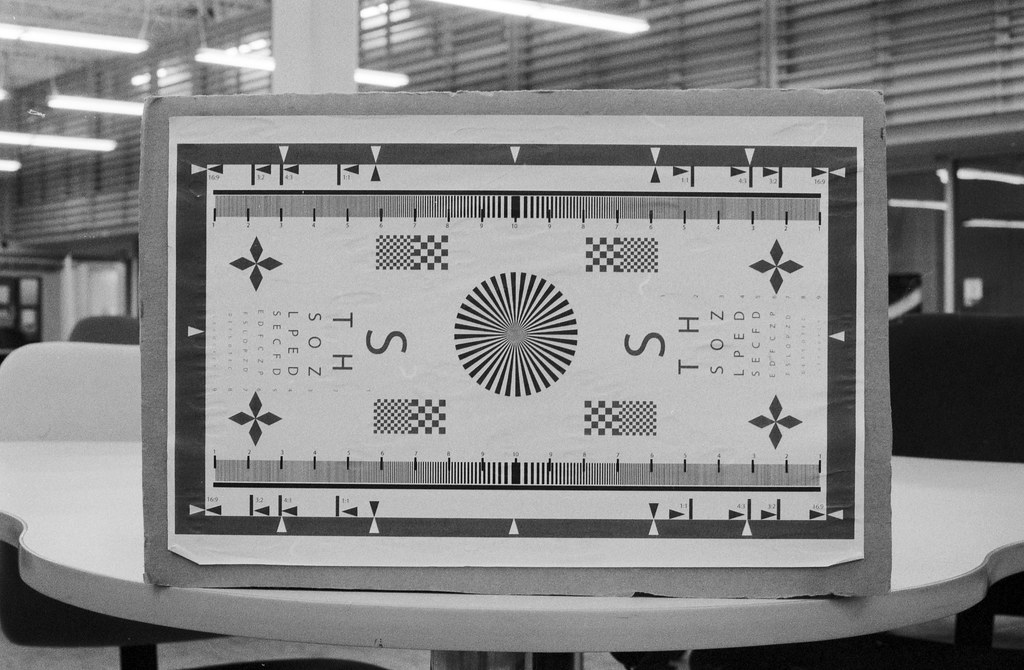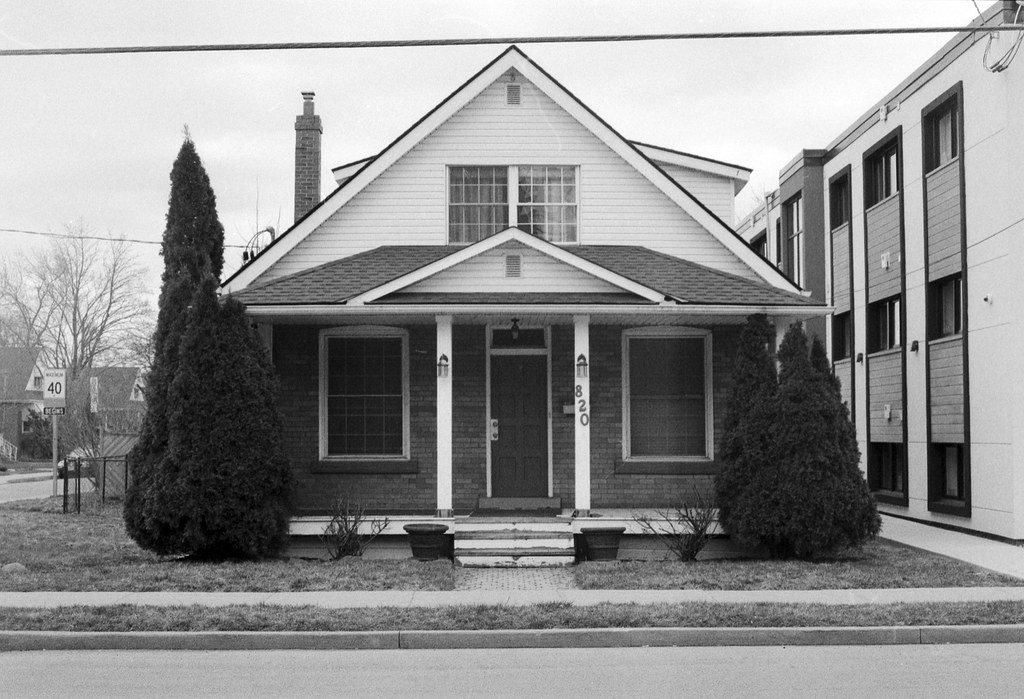It should only be fair that my fiftieth lens review be of a 50mm lens, these are often the first lens that a budding photographer will pick up when getting into the wild world of film photography. And often it is the only lens that they continue to use long after. With my first two SLRs (SR-T 102 and X-7a) the 50mm lens was my go-to choice for most of the time shooting with them. I have since moved on and now am more likely to reach for a 35mm lens, the 50mms still hold a place for my work and I still grab one to narrow things down a little instead of always shooting something more wide-angle. I am far more limited in my FD system than my manual focus Nikkors, I find there is still a certain satisfaction with the focal length. The one thing I did notice is that Canon offered up a lot more 50mm lenses than their contemporary camera builders, which makes things a bit more complicated. Most photographers will go for the 50mm f/1.4 SSC lens, and that is a fine piece of glass, but today I’m looking at something a bit lower spec, the 50mm f/1.8 SC. But don’t let that (slightly) slower aperture and missing S give you pause, this is still an excellent piece of glass.
Lens Specifications
Make: Canon
Model: FD 50mm 1:1.8 S.C.
Focal Length: 50mm
Focal Range: ∞ – 0.6m
Aperture: f/1.8 – f/16, 6 Blades
Structure: 6 Elements in 4 Groups

Canon AE-1 – Canon Lens FD 50mm 1:1.8 S.C. – Ilford Delta 400 @ ASA-400 – Adox FX-39 II (1+9) 9:00 @ 20C (Constant Rotation)
Build Quality
The build quality of the lens is excellent, and I have no complaints about the reliability or construction of the optics. The lens itself is not overly heavy, nor does it move the centre of gravity when using any of the A-Series cameras or even the heavier pro F-1 or older FD-Mount cameras from the previous decade. The primary external material is plastic, but the internals are metal and, more importantly, the lens mount. The focusing ring is big and well-textured, and focusing is smooth with enough resistance to allow for high accuracy. The aperture ring gives enough feedback, although the click stops could have a more substantial-stop feel. Another minor annoyance is the distance between the last stop and the “A” setting to put the lens into a mode to allow for shutter priority metering; if you leave it halfway between the A and f/16, the lens will always be stuck on f/16, and you might end up over or underexposing the images. Although the lock on the “A” mode is good and prevents you from accidentally moving it off the automatic mode. But double-checking before heading out into the field is good practice. As this is an original FD-Mount, the mounting process requires two hands as the lens has the collar lock ring. I’ve gotten much better at quickly mounting and dismounting this lens, but I still find it a minor annoyance, especially since you also need to use this locking ring to secure and remove the rear cap.

Canon AE-1 – Canon Lens FD 50mm 1:1.8 S.C. – Ilford Delta 400 @ ASA-400 – Adox FX-39 II (1+9) 9:00 @ 20C (Constant Rotation)
Canon AE-1 – Canon Lens FD 50mm 1:1.8 S.C. – Ilford Delta 400 @ ASA-400 – Adox FX-39 II (1+9) 9:00 @ 20C (Constant Rotation)
Canon AE-1 – Canon Lens FD 50mm 1:1.8 S.C. – Ilford Delta 400 @ ASA-400 – Adox FX-39 II (1+9) 9:00 @ 20C (Constant Rotation)
Canon AE-1 – Canon Lens FD 50mm 1:1.8 S.C. – Ilford Delta 400 @ ASA-400 – Adox FX-39 II (1+9) 9:00 @ 20C (Constant Rotation)
Canon AE-1 – Canon Lens FD 50mm 1:1.8 S.C. – Ilford Delta 400 @ ASA-400 – Adox FX-39 II (1+9) 9:00 @ 20C (Constant Rotation)
Image Quality
It should not surprise anyone that the image quality of this lens is excellent, but I didn’t expect how good the quality of this lens is! Light leaks aside (the door needed some adjustments), the quality I got out of this lens is nothing to sneeze at. The one thing you don’t have to worry about as much with this lens is flare; while you can add a lens hood, which will cut this problem out completely, much of it is already mitigated by the S.C. coating on the lens. I noticed that there is barrel distortion when focusing in close; this shouldn’t be surprising, as I’ve found this distortion on all the 50mm lenses I’ve reviewed to this point. But it is a minor trouble, and with a bit of post-processing work, you can straighten up your lines or even start with one of the many built-in profile corrections and adjust from there. Other than that, I found no other quality concerns with the lens. When shooting wide open (f/1.8), there is no fall-off or vignetting at the corners; while not the sharpest option, it isn’t too bad. You start to see the sharpness snap into place as you begin to stop down past f/2.8, and by f/4, it is superb. I would put the lens’s sweet spot between f/4 and f/11, as I got the best results between these apertures. The one thing that I enjoy with the lens that did surprise me is how excellent the out-of-focus rendering is; the lines are smooth and have a bubble-like quality, and while there’s no swirl present, the clean lines are a nice touch. Overall, despite being overshadowed by the far more desirable 50mm f/1.4 S.S.C. The 50mm f/1.8 S.C. has nothing to worry about in the image quality department.





Applications
Like all other 50mm lenses, it makes for an excellent general-purpose lens but has a lot more in the way of quality and control than the non-S.C. version of this lens. And if you’re buying an A-Series camera, this is the lens that is going to be on the front of it. While you can always hope for the 50mm f/1.4 S.S.C., this is a good lens, too. It makes for a great starter lens to see if you enjoy working with the FD-Mount, as it gives a close approximation of the standard field of view for the human eye. Perfect as an addition to any three-lens kit for travel to help provide you with something faster for low-light work. The close-focusing of the lens allows you to also get in close and see details, which makes for a poor man’s macro lens (but it isn’t a macro lens). You can also handle portraits, groups, architecture and even landscapes with the lens. Probably the best way to describe the applications on this lens is a jack of all trades but the master of none, which isn’t a bad thing.





The Low Down
Not only is this lens readily available on the used market, but it is also surprisingly affordable, with most going for under 100$, and you will often get both caps and even a lens hood. But once you get your first A-Series Canon, you’ll have this lens. While you are tempted to switch up to that f/1.4, you don’t have to. The 5/1.8 S.C. offers everything a beginner photographer could need, and if you want to get something more, go for a different focal length instead. This is the perfect lens to get yourself into the Canon FD-Mount system without breaking the bank and showing off the quality of Canon optics of the age.
Further Reading
Don’t just take my view on the Canon FD 50/1.8 SC, check out these other reviews.
Casual Photophile – Canon FD 50mm F/1.8 Lens Review
Canon Classics – Canon FD 50mm f/1.8 S.C. Review (User Submitted)
YouTube – EuroSport – Canon FD 50mm f/1.8 S.C. Review
